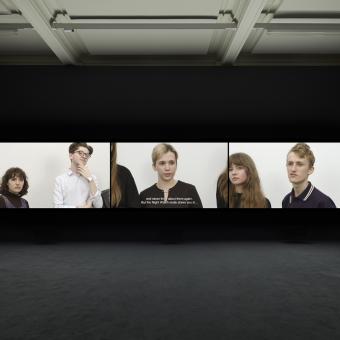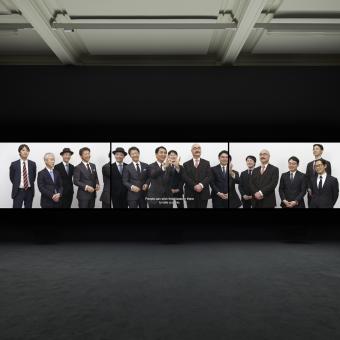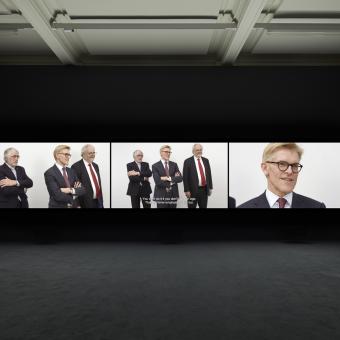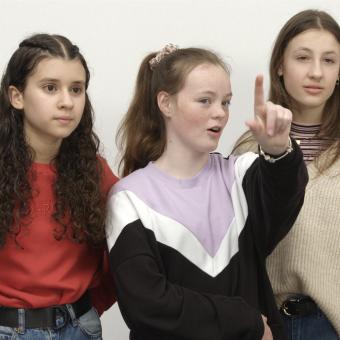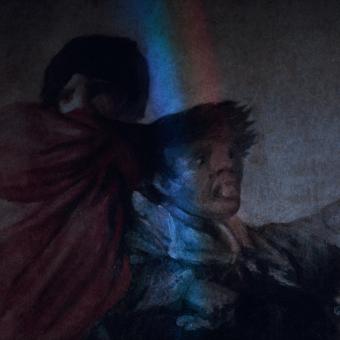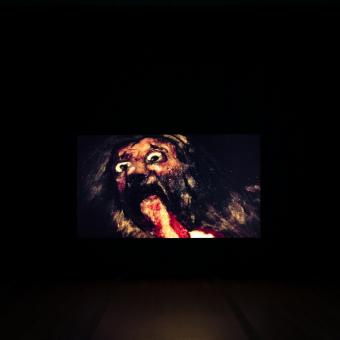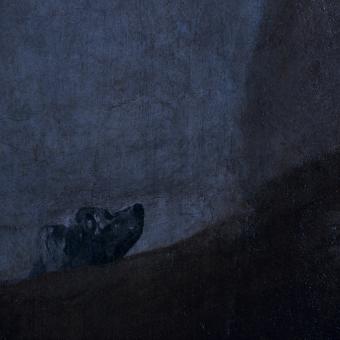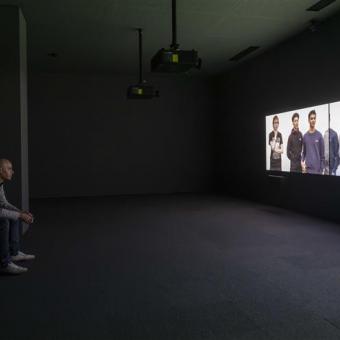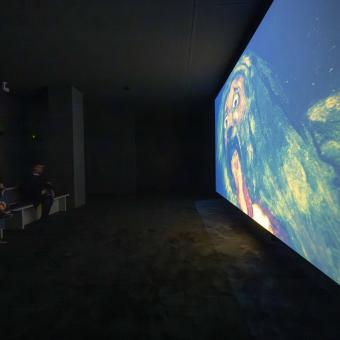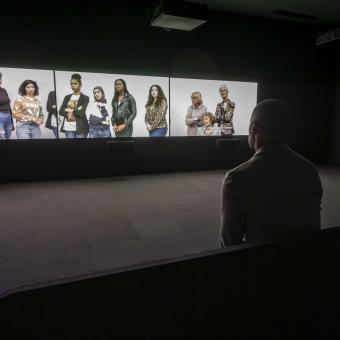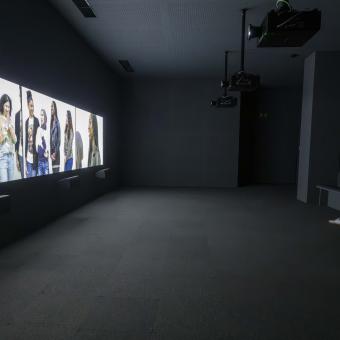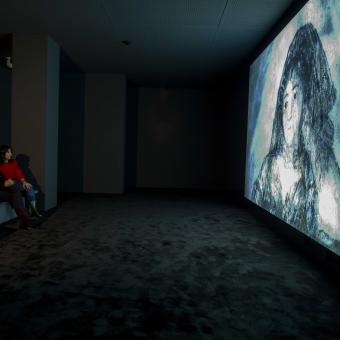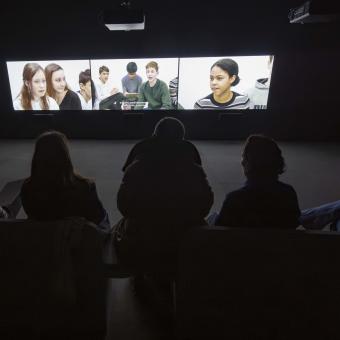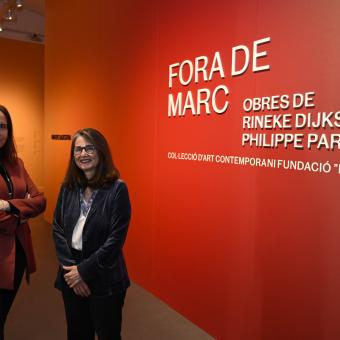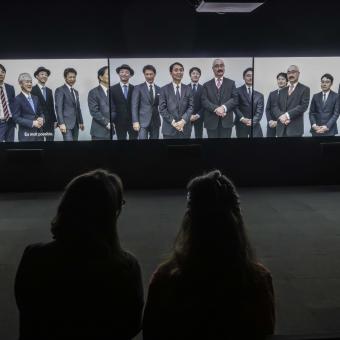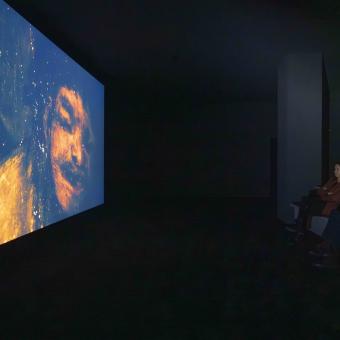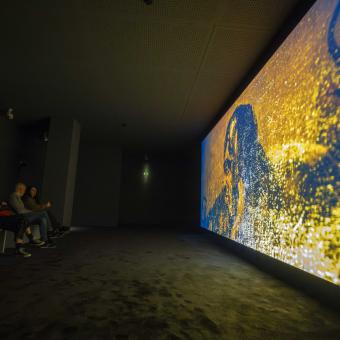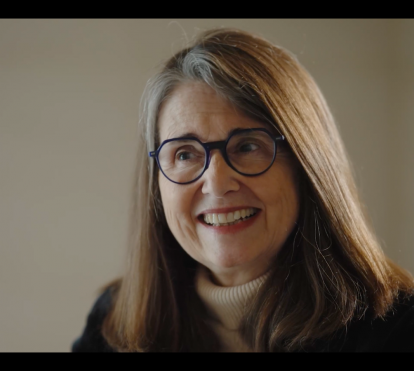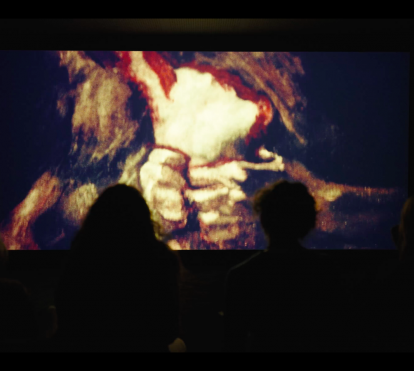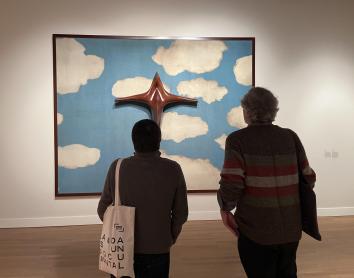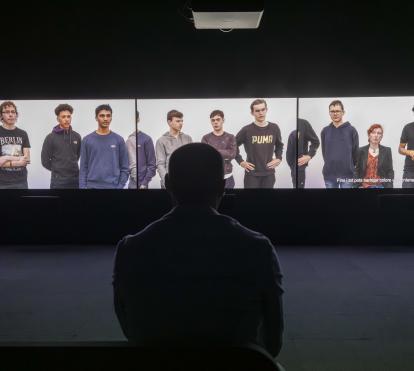
CaixaForum Barcelona pays tribute to the artistic experience through two audiovisual works by Dutch photographer Rineke Dijkstra and French contemporary artist Philippe Parreno, both part of the ”la Caixa” Foundation Contemporary Art Collection.
The director of the ”la Caixa” Foundation Contemporary Art Collection, Nimfa Bisbe, presented Out of frame. Works by Rineke Dijkstra and Philippe Parreno this Tuesday at CaixaForum Barcelona. The exhibition explores two distinct yet complementary approaches to the experience of art: one through Rineke Dijkstra’s installation Night Watching, and the other with Philippe Parreno’s immersive film La Quinta del Sordo.
While Night Watching by Rineke Dijkstra documents how different groups of visitors observe Rembrandt’s The Night Watch, La Quinta del Sordo by Philippe Parreno virtually transports viewers into the house where Goya created his Black Paintings.
The two installations offer a unique perspective on the art of the past through interaction with the viewers. Both works transcend the traditional concept of the frame as a container for observation and push beyond its limits. One focuses on the perspective of the observer, while the other takes the experience beyond the museum and opens up new possibilities for artistic engagement.
These are two major installations, recently acquired by the ”la Caixa” Foundation Contemporary Art Collection, which place the public at the heart of the artistic experience. They will be on display at CaixaForum Barcelona until 26 October.
The exhibition begins with a shared welcome area that leads to two independent rooms equipped with the most advanced image and sound technology, designed to create an immersive and enveloping atmosphere that maximises the audience’s experience. These rooms are also fitted with soundproof panels to prevent cross acoustic interference between them.
The exhibition reflects the extent to which the artistic experience is a deeply personal journey, in which each viewer brings a unique perspective shaped by their own experiences, knowledge and background. It highlights the active role of the audience in constructing the meaning of art. In this sense, viewers also become creators: they discover, interpret, narrate, imagine and reinvent new interpretations of art.
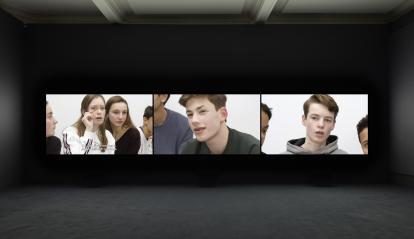
14 groups of visitors observe Rembrandt’s The Night Watch
In the three-channel video installation Night Watching (2019), Dutch artist Rineke Dijkstra allows viewers to see and listen to a diverse range of audiences as they observe The Night Watch (1642), Rembrandt’s masterpiece, without ever actually seeing the renowned painter’s canvas.
After receiving an invitation from the Rijksmuseum in Amsterdam, the photographer filmed 14 groups of visitors as they contemplated this outstanding 17th-century painting, which depicts a portrait of the Amsterdam militia and is considered one of the most famous works by the Dutch painter.
Dijkstra, to whom CaixaForum Barcelona dedicated a solo exhibition in 2005, carried out her recording in front of the large painting, located in the Gallery of Honour at the Dutch museum, over six sessions after it had closed to the public. A neutral background was placed behind the visitors to focus entirely on their expressions, gazes and comments, removing them from their usual context.
Through the various groups of visitors, the artist aimed to represent the diverse population of our cities, dedicating considerable time to selecting the individuals filmed, each with their own dynamics and mutual relationships.
The video features a range of groups, from Japanese businessmen evaluating the painting’s benefits in terms of tourism, to a group of schoolgirls from the city discussing the painter’s gesture of reproducing his wife’s face on the only woman who appears in the painting. The different sequences also include a group of young artists reflecting on what it must be like to create a masterpiece of such magnitude, a family of women reminiscing about previous visits to the painting, and a number of young women sitting on the floor sketching a draft of Rembrandt’s masterpiece.
The visitors’ observations range from random comments to meaningful connections with their personal lives, offering viewers an awareness of group dynamics and individual identities. Like the painting itself, the video stands as a group portrait. “I always pay close attention to those moments when people are off their guard,” the artist emphasises.
According to Dijkstra, the video installation explores themes of subjectivity, group dynamics and the ways we relate to one another. It also examines different perspectives on a work of art, the contemporary interpretations of a 16th-century painting, and the idea that the interpretation of a work is closely tied to individual and collective experiences, among many other topics. Rineke Dijkstra is not only interested in what people say, but also in how they say it, in the way the audience “sees” the painting through the faces, gestures and comments of those observing it.
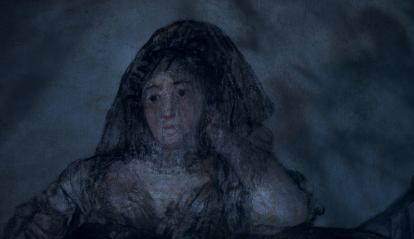
“Science fiction film” about Goya’s Black
Paintings
On the other hand, in La Quinta del Sordo (2021), Philippe Parreno presents an immersive film that places viewers inside the house where Francisco de Goya created his famous Black Paintings. The audiovisual installation, which the artist himself has described as a “science fiction film”, recreates a space that no longer exists.
Using the most advanced image and sound technologies, Parreno brings to life Goya’s now-lost estate, where he created the renowned series of fourteen oil paintings directly on the walls of two rooms – the ground and upper floors – of the so-called Quinta del Sordo. This property, located near the Manzanares River, was purchased by the painter in 1819 and bequeathed to his grandson Mariano in 1823, before Goya departed for France.
These mural paintings were transferred onto canvas and assigned to the Museo Nacional del Prado, where they are preserved. To create the 40-minute film, the artist recorded the paintings at the national gallery during the pandemic, using special cameras.
The film takes viewers on a journey to the 19th century, aiming to reconstruct Goya’s lost house through image and sound: the crackling from a fireplace, the sounds emanating from the artworks themselves (captured by scanning them), or the gentle flicker of a candle, as there was no electricity at the time. For added realism, the installation’s soundscape includes barking dogs and unidentified noises coming from outside.
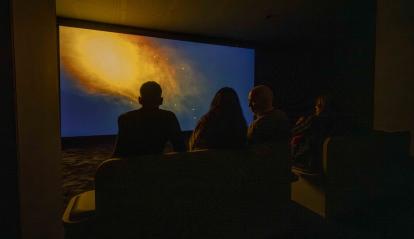
The artist’s priority is to provide an acoustic reconstruction of the space, setting aside any attempt to faithfully reproduce the house aesthetically. The visuals, on the other hand, focus on how the paintings might have been perceived at the time, by placing them in an environment where the only light comes from the glow of a fireplace and a candle – dim lighting that allows a close view of the famous paintings. As a result, viewers are presented with visions of Saturn Devouring His Son, Leocadia Zorrilla, Two Old Men, Two Old Men Eating, and The Drowning Dog, among others.
Some of the images were recorded in extremely slow motion to show that very journey through time.
For the occasion, CaixaForum Barcelona has created Yo, público (I, the Audience), a mediation tool and a specific participatory device, designed with various materials and associated activities, which will be progressively shaped by the contributions of visiting groups of all ages. This space will be available for consultation by the general public visiting the exhibition independently. The initiative aims to highlight and make visible the active role of the audience in the artistic experience.
In addition, the exhibition will feature the visual arts cycle La mirada desplazada: visitas expandidas con artistas (The displaced gaze: expanded visits with artists) that, curated by the researcher and curator Arola Valls, will allow us to reflect on the multiplicity of sensibilities, perceptual channels and imaginative possibilities that are activated when we enter a museum. It will feature the artists Vero Cendoya and Helena Vinent, the filmmaker and cultural mediator Laura Arensburg, the Desmusea collective and the Institut del Temps Suspès. Besides, the performance El plural de árboles es nosotros (The plural of trees is us) will take place, by the La Tangenta Company. This stage essay tries to explore what “us” means and what this bond that unites us is made of, with sound as a hypothesis. The objective is none other than to extend this question towards the idea of bond, while questioning the very mechanisms of theatricality.



